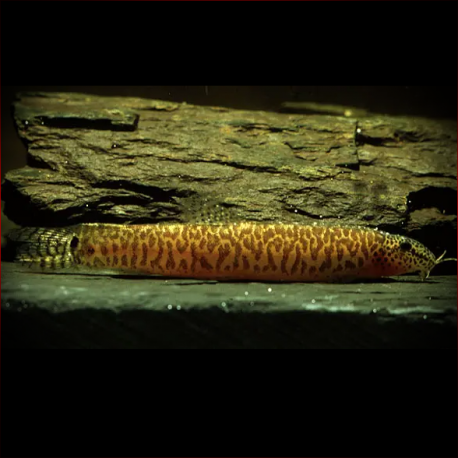More info
Datasheet
| Minimum Tank Size | 60 litres / 15.85 US gallons |
| Maximum Size | 4.5cm / 1.77inches |
| Temperature | 20°C / 68.00°F - 25°C / 77.00°F |
| Hardness | 2.02dgH / 36ppm - 15.02dgH / 268ppm |
| pH | 5.5-7.5 |
General Description
Lepidocephalichthys jonklaasi, also known as Lepidocephalus jonklaasi, is a small fish species with a maximum size of 4.5cm. It can be distinguished by its truncate or rounded caudal fin, absence of scales on the head, and large black spots on its flanks.
Aquarium Setup
Keeping Lepidocephalichthys jonklaasi in captivity requires a minimum tank size of 60 litres with a soft, sandy substrate to accommodate their burrowing behavior. Water conditions should have a pH range of 5.5-7.5, hardness between 36-268ppm, and a temperature of 20-25°C. The tank should have hiding spots provided by water-worn rocks, driftwood branches, and tree roots, with dim lighting to mimic their natural habitat.
Behaviour
Known for their peaceful nature, L. jonklaasi gets along well with both conspecifics and other fish species. They thrive in the company of at least 4 individuals and may display timid behavior if not housed with upper water column-dwelling fish species, such as Trichopodus, Trichogaster, Trichopsis, or certain Danio species. It is essential to research tank mates as some loaches from Botiidae, Cobitidae, and Nemacheilidae families can be territorial or aggressive.
Feeding and Diet
These micropredators sift mouthfuls of substrate to extract insect larvae and small crustaceans in their natural habitat. In aquariums, they accept sinking dried food but also require a diet of small live and frozen foods like Daphnia, Artemia, and bloodworms to stay healthy.
Reproduction & Dimorphism
Details regarding the reproduction of Lepidocephalichthys jonklaasi are unrecorded. Mature males exhibit enlarged pectoral fins with fused innermost rays forming a structure called the lamina circularis. Females are generally larger and heavier-bodied than males.
Habitat and Distribution
Endemic to Sri Lanka, L. jonklaasi is found in shaded pools of mountain streams at an elevation of 500 meters. Its distribution is limited to the wet zone in southwestern Sri Lanka, specifically in river basins like Gin, Kalu, Nilwala, and Bentota, along with a small blackwater creek near the Kottawa Forest Reserve. Destruction of its habitat due to deforestation has led to its endangered status since 1990. The species thrives in shaded, slightly cool water with low conductivity and slightly acidic pH levels.

